
Of all the ways to garden, raised beds remain one of the most popular approaches to growing food and flowers. Among its numerous merits, raised bed gardening keeps things neat and orderly while bumping up productivity and yields for a whole lot less work.
There are oodles of materials you can use to build raised beds but wood is still the classic choice.
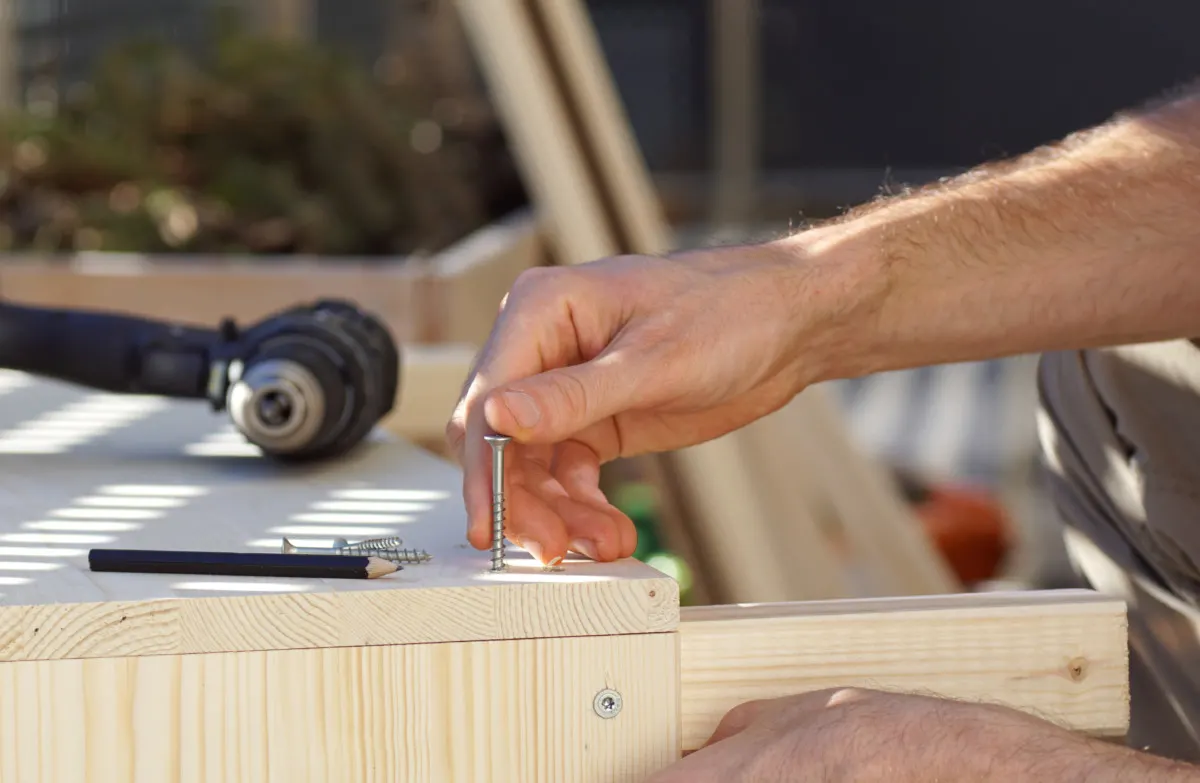
Timber frames are sturdy and handsome, giving the above-grade growing area a much more natural look. Wood planks can be cut to whatever size you need and, with a few nails or screws in hand, are super simple to assemble.
Constructing raised beds from wood has one major drawback, though: your beautiful wooden boxes have an expiration date.
It’s true that all wood that comes into contact with moist soil will degrade given enough time. And when your raised beds are exposed to the elements year-round, the rot can set in much faster.
Here’s what you can do to squeeze the most mileage from your wooden raised beds:
1. Choose Naturally Rot Resistant Wood
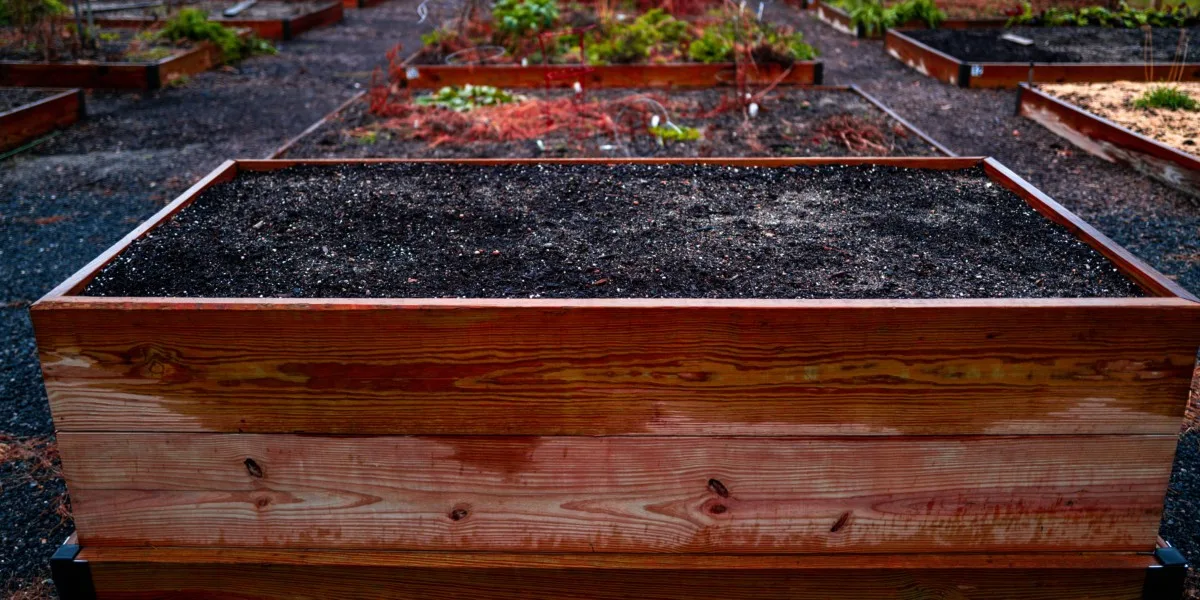
Wood decay is triggered by a combination of moisture, fungi, oxygen, and warmth.
Continuously wet wood is quickly colonized by fungi that are present in the air and soil all around us. As the microorganisms feast away at the cellulose and lignins in the timber, the wood will become weakened and soft, leading to fractures, splits, warping, and eventual structural failure.
Because raised beds will always be in contact with soil, keeping them rot-free poses an extra challenge.
However, some types of lumber are more naturally inclined to resist moisture and attacks by fungi, bacteria, and insects.
Cedar
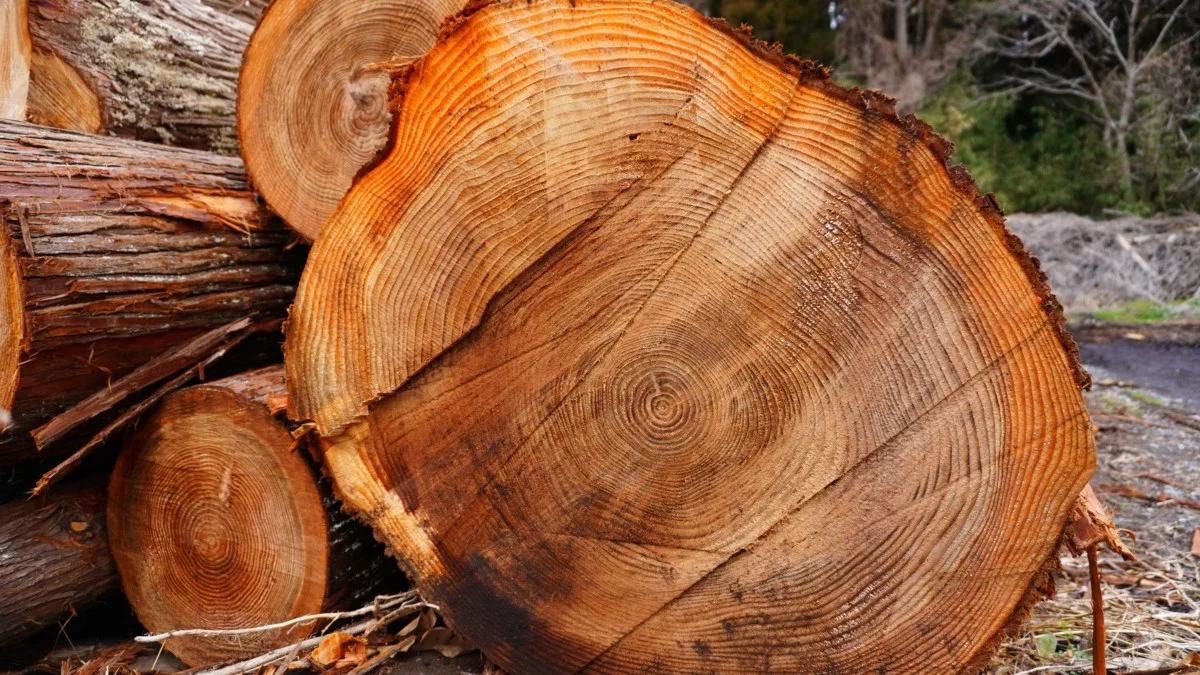
The gold standard for outdoor building projects like raised beds is cedar lumber.
Western red cedar (Thuja plicata) and Eastern red cedar (Juniperus virginiana) are strong and durable woods that are extremely resistant to decay. Both are indigenous to North America, with Western red cedar growing in the Pacific Northwest and Eastern red cedar throughout the eastern half of the US.
Though they are not true cedars since they come from the Cypress family, these “false” cedars have aromatic wood and flat, fern-like leaves similar to those in the Cedrus genus.
As members of the Cupressaceae, these woods contain antibacterial and antifungal substances that remain in the timber long after the tree itself has been felled.
Cedar lumber can last 20 years or more, even when the wood used outdoors is raw and untreated.
Cypress
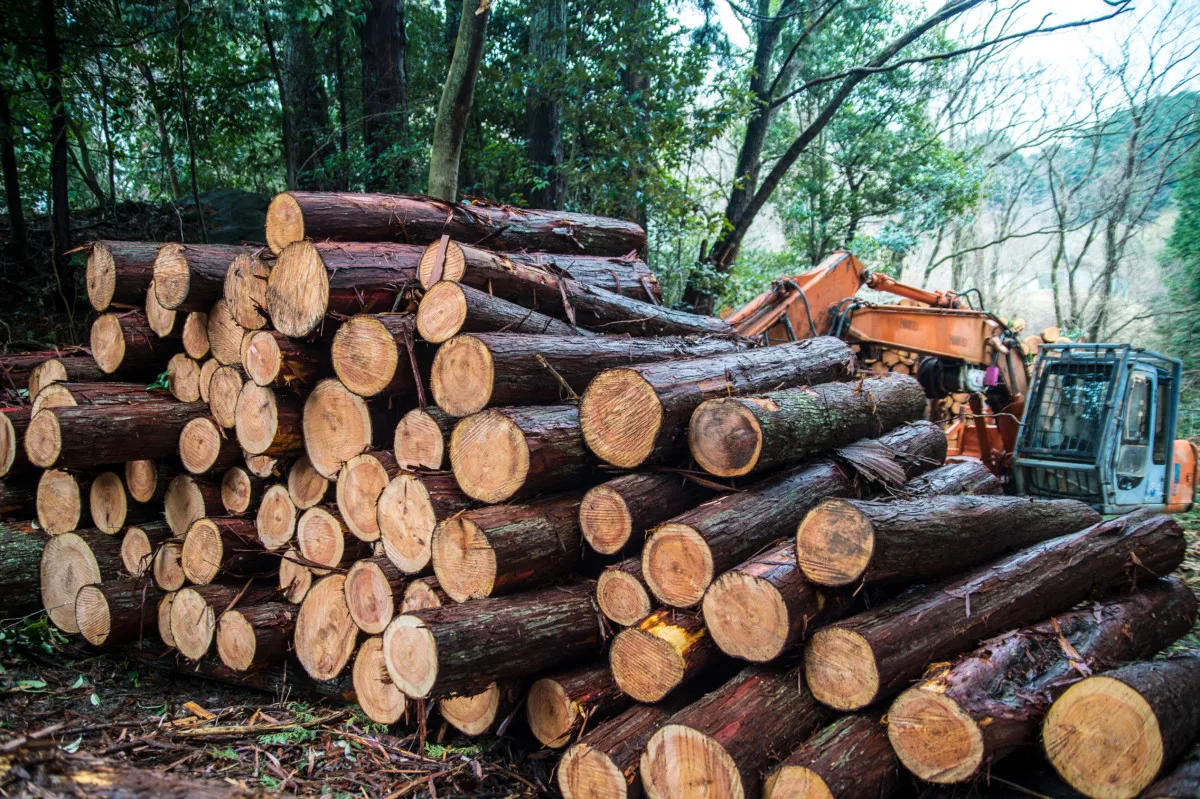
Similarly decay-resistant is bald cypress (Taxodium distichum), a deciduous conifer native to the southeastern US.
A slow-growing tree, cypress wood is denser and heavier than cedar. The lumber is odorless but has a gorgeous fine grain like red cedar.
It was at one time dubbed “the wood eternal” for its longevity in building projects. And because it’s a Cupressaceae, it contains those amazing antifungal compounds that naturally help keep the rot out.
The inner heartwood is the most durable cut of cypress lumber. When shopping, choose boards with a slight yellowish hue over the cream-colored younger sapwood.
Oak
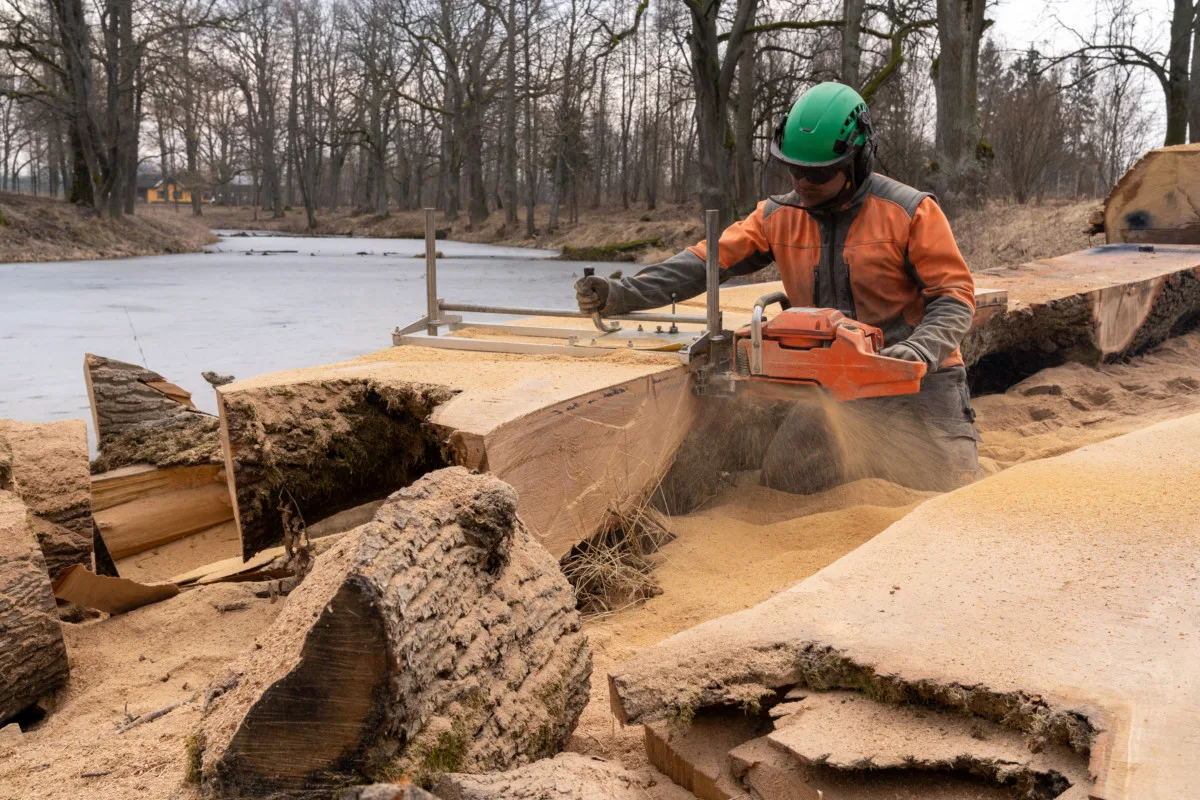
White oak (Quercus alba) is a large and long-lived tree that ranges through eastern and central North America.
Historically used in shipbuilding and aging barrels for wine and whiskey, white oak has a remarkable innate resistance to water and rot. Its strength, density, and durability make it an ideal outdoor wood.
The lumber from white oak is closed grain hardwood, meaning the pores of the timber are plugged up tight to shut out moisture.
When properly sealed, white oak lumber can last 100 years or more outside.
Pine
Pine (Pinus spp.) is a fast-growing softwood found throughout the northern hemisphere. Highly prized for its timber, pine is used widely in building construction and carpentry.
Pine lumber is more affordable than the other woods on this list, but it is also the least rot resistant. Untreated pine has an outdoor lifespan of only 2 to 4 years.
Though modern-day, tree farmed pine has a short life outside, old-growth pine is incredibly strong and dense, with much better resistance to decay.
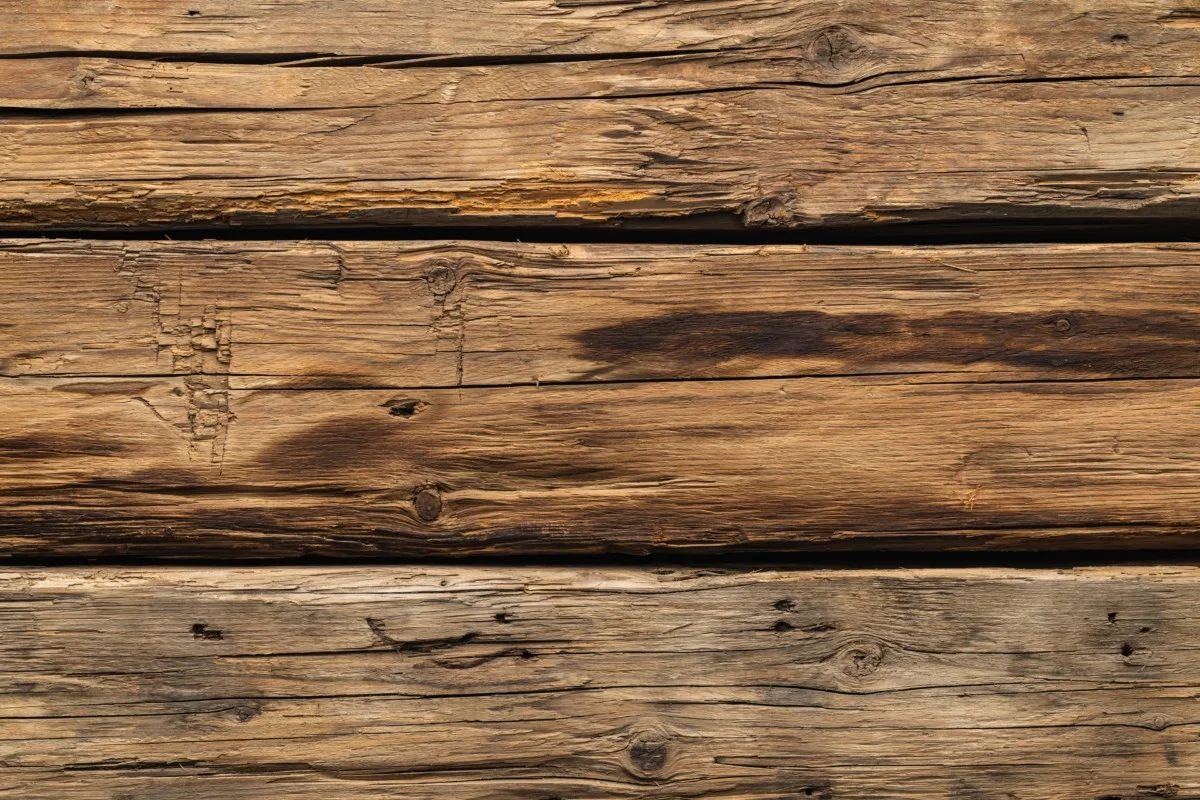
Reclaimed pine from old barns, shiplap siding, and buildings at least 50 years old can be a terrific source of old-growth pine.
2. Apply a Wood Preservative
Whatever wood you choose, applying a wood sealant to lock out moisture will prolong the usability of your wooden raised beds many times over.
It’s recommended to avoid using pressure-treated wood for raised beds, especially if you’re using them to grow food. Although chromate copper arsenate (CCA) was phased out in 2004 over concerns of arsenic leaching into the environment, less toxic alternatives like alkaline copper quaternary (ACQ) will still leach some copper into the soil.
If you’d rather err on the side of caution, you can use these wholly natural and safe plant oils to protect your wooden beds from rot.
Raw Linseed Oil
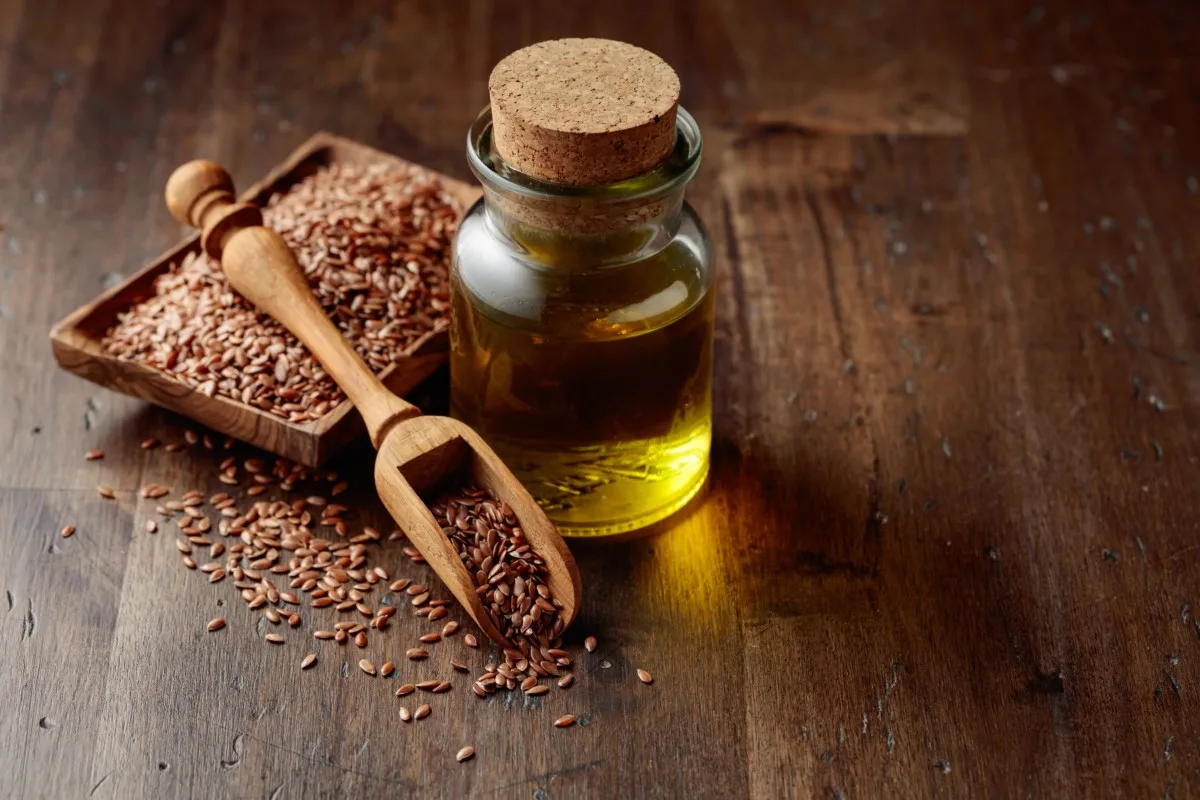
Long before the industrial manufacture of chemical preservatives, folks used linseed oil to safeguard their lumber.
Linseed oil is pressed from flaxseed. It works by penetrating deeply into the porous fibers of wood to shield it from moisture.
Raw and pure linseed oil is an all-natural product that’s safe to use on raised beds, but it takes a very long time to dry – anywhere from days to weeks. Don’t be tempted to purchase boiled linseed oil to speed up drying time, as these products contain solvents and metals that could leach into the garden beds.
The best approach for quicker linseed oil drying is to apply it in a warm, well-ventilated space on wood that is completely dry. Apply it in thin coats with a paintbrush and wipe off any excess with a rag.
Give the lumber multiple treatments for the very best wood preservation. Always allow each layer to fully dry before applying the next coat.
Pure Tung Oil
Cold-pressed from the seeds of the tung tree, tung oil has been used since antiquity as a ship waterproofer and all-round wood preserver. Although all parts of the tung tree are highly poisonous, the oil itself is completely safe and non-toxic.
It works by creating a tough, yet elastic, outer coating that is very water-resistant. Tung oil dries a lot faster than linseed oil, taking roughly 3 days to dry in optimal conditions.
Like linseed oil, tung oil should be applied in multiple coats and allowed to thoroughly dry between applications.
Look for products labeled “pure” and avoid varnish blends to keep potentially toxic additives out of your garden.
Pine Tar
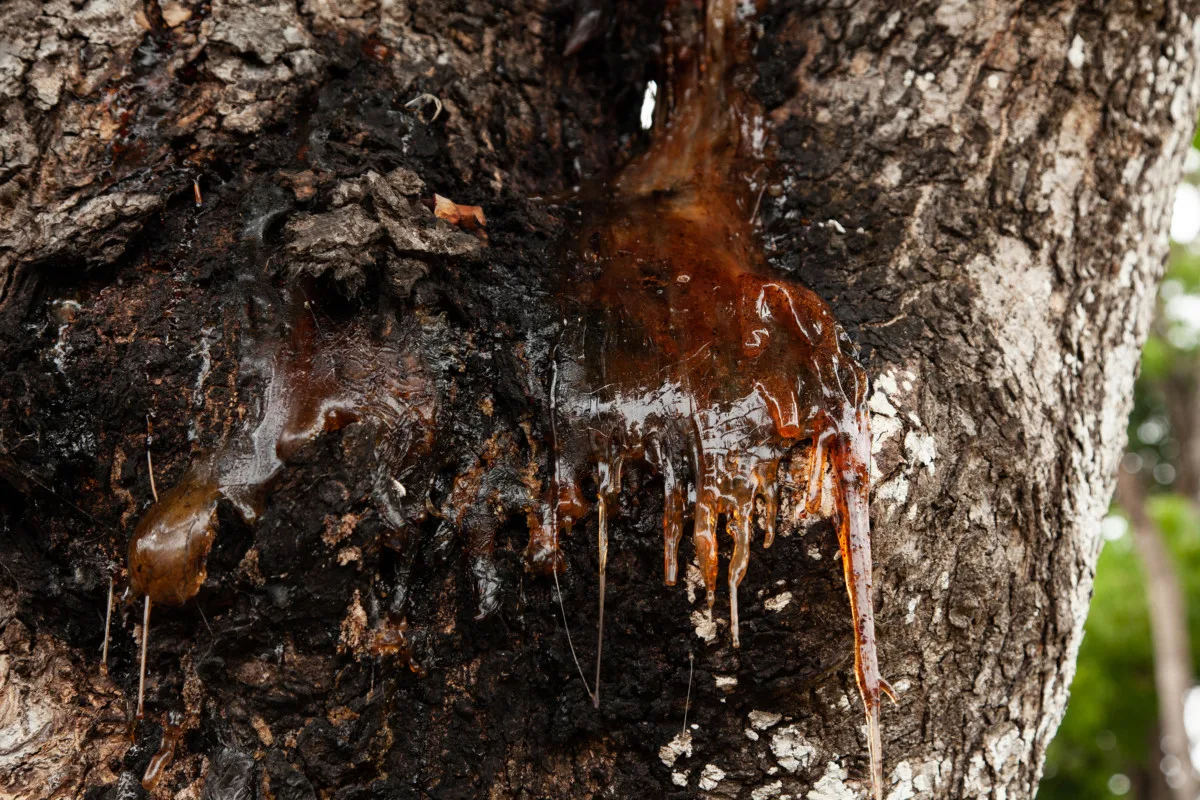
Standing up to the harshest outdoor conditions, pine tar is another old-timey wood preservative that was once used by Vikings to coat ship decking and rigging.
It’s made through the slow-burning of resins from the roots of pine trees. Wood that’s been treated with pine tar will be much more resistant to moisture and microbes.
Pine tar is a very thick and viscous substance. Warm it up to use it right out of the tin or thin it first in a 50:50 ratio with linseed oil.
Use a stiff paintbrush to work pine tar into the wood and apply a minimum of two coats. Similar to other drying oils, pine tar can take a day to several weeks to cure. Applying it to lumber in warm conditions will make it dry faster.
3. Don’t Use a Liner
You would think that lining raised beds with plastic sheeting would help protect the wood from moisture. It’s quite the opposite.
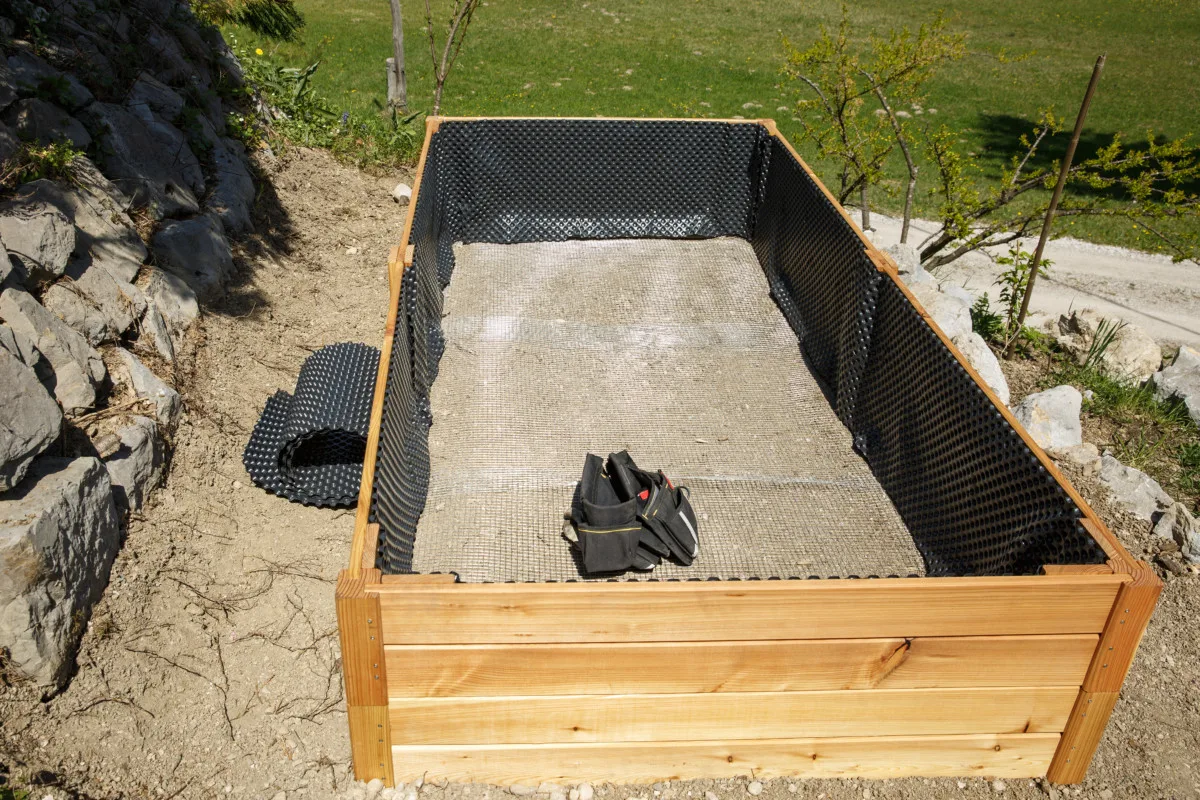
Lining the bottom and sides of the wooden frame with an impermeable material like plastic tends to hasten the whole process of decay as well as prevent proper draining of the soil.
This is because water can easily become trapped between the plastic and the wood, particularly in the hot and humid weather of summer. With nowhere to drain off to, condensation and moisture will sit right next to the wood, welcoming the next generation of fungal invaders.
If that’s not bad enough, plastic liners can do plenty of harm inside the raised bed too. They may prevent water from freely draining and stifle airflow through the soil of the bed, starving the plant roots of oxygen.
Although lining your beds with breathable and water-permeable things like newspaper, cardboard, and canvas are much better for your plants than plastic, these materials aren’t waterproof and won’t help protect the wood from moisture.
To get the most from your raised beds, it’s best to focus your energies on sourcing quality lumber and taking your time to seal it up properly.
4. Install Corner Brackets
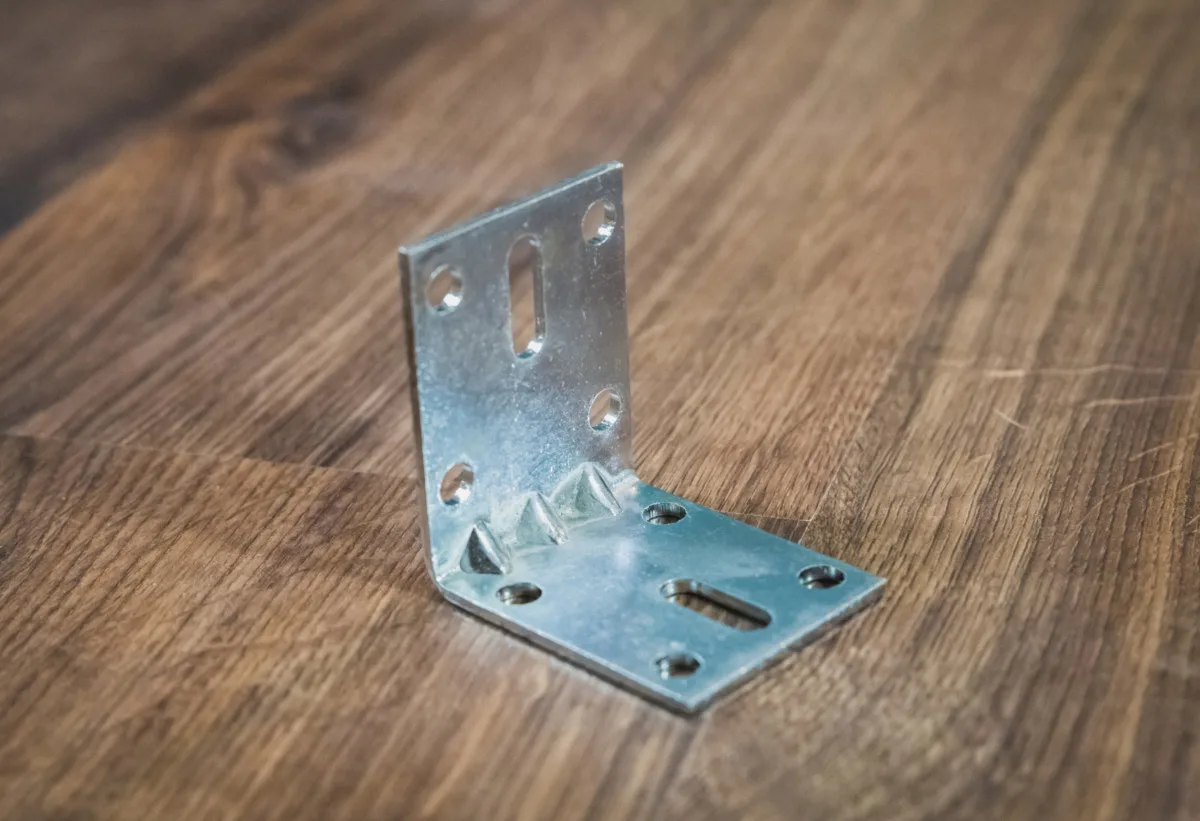
The freezing and thawing cycles of spring and fall can certainly take their toll on the corners of your raised bed frame. Wood expands in hot and humid air and contracts in cold and freezing temperatures.
When only screws or nails are used to fasten the corners, they won’t hold up well against the swelling and shrinking of the seasons. As the exposed wood starts to rot, the hardware will begin to loosen and the corners will come apart.
You can easily strengthen the corners with inexpensive metal brackets from the hardware store. There are gads to choose from, and even some that are specifically made for raised bed builds.
Any bracket that requires multiple screws to affix will help make the raised bed much more robust. Add more surface area to attach screws by placing a 2” x 2” wooden stake on the inside of each corner.
By shoring up the corners, your wood frame will be so much studier and will maintain its shape during those extreme swings in temperature.

Get the famous Rural Sprout newsletter delivered to your inbox.
Including Sunday ramblings from our editor, Tracey, as well as “What’s Up Wednesday” our roundup of what’s in season and new article updates and alerts.

